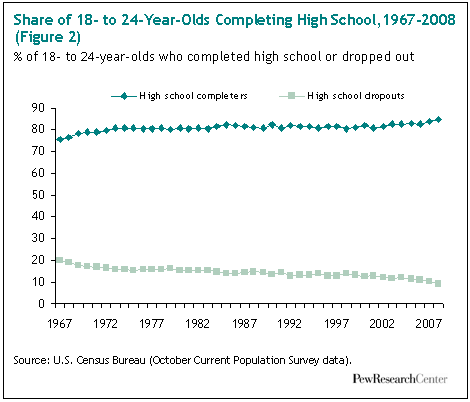The record share of 18- to 24-year-olds attending college in 2008 comes at a time when a record proportion of young adults have completed high school, either by regular high school graduation or passing an equivalency test. According to Census Bureau figures, in October 2008, almost 85% of 18- to 24-year-olds had completed high school, an all-time high for this basic measure of educational attainment (Figure 2) and up from 75.5% in 1967. Thus, more youths than ever before were eligible to attend college (most college students have finished high school). Another factor that could account for the greater share of 18- to 24-year-olds attending college could be an increase in the rate of college attendance among those who have finished high school. However, this did not occur in October 2008. The measured college enrollment rate of 18- to 24-year-old high school completers was 46.7% in 2008, slightly below the peak attained for this measure in 2005 (46.9%). Effectively, a record high proportion of youths are in college because the base of yo ung high school completers is at an all-time high, not because college enrollment among high school-educated youth has increased.
Census figures also indicate that a record low share6 of 18- to 24-year-olds were high school dropouts in 2008 (Figure 2). In October 2008, 9.3% of 18- to 24-year-olds were high school dropouts — less than half the 19.8% of 18- to 24-year-olds who were high school dropouts in 1967.7





